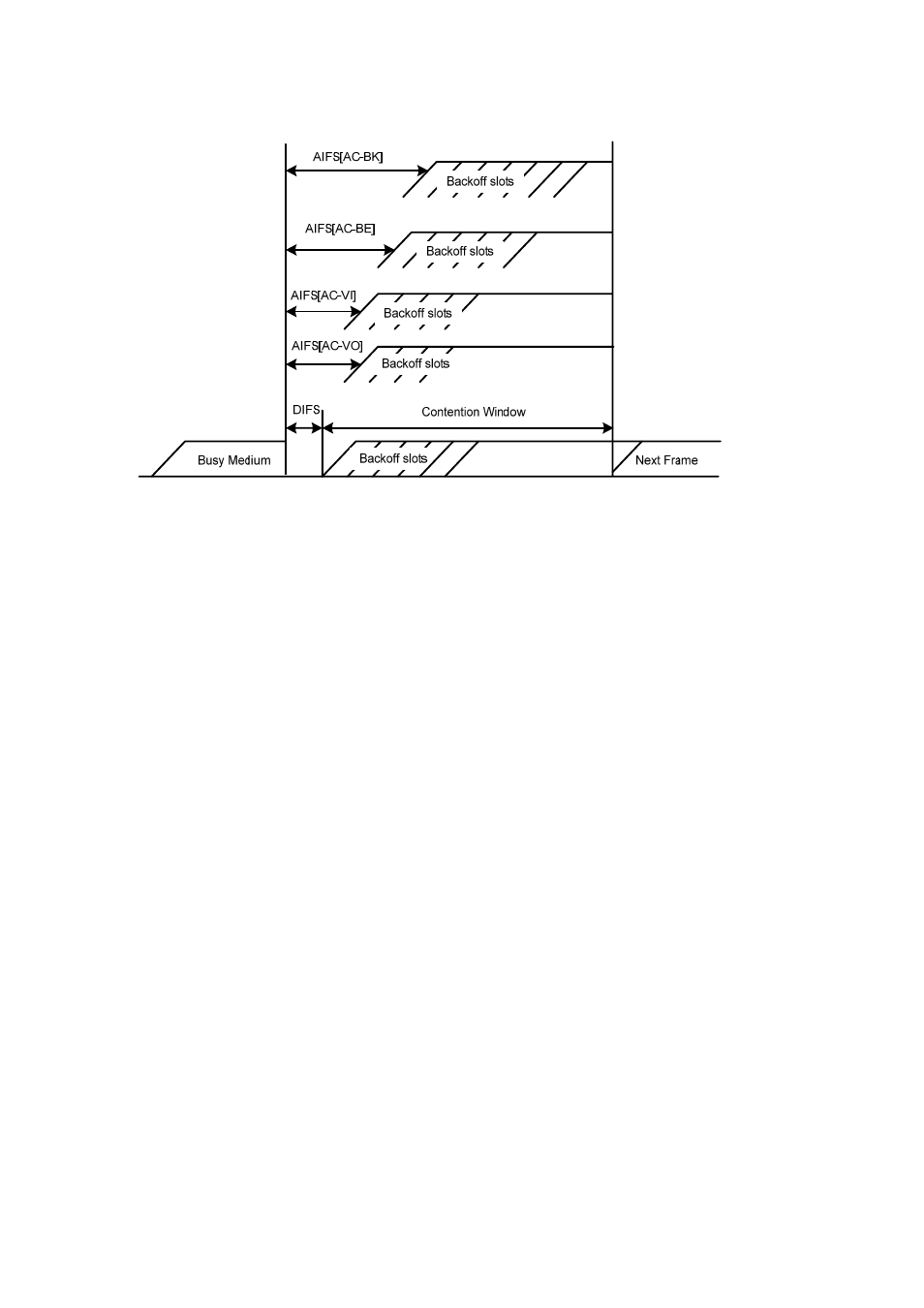Cac admission policies, U-apsd power-save mechanism, Figure 8-1 – H3C Technologies H3C WA2600 Series WLAN Access Points User Manual
Page 54: For the aifs durations), S (see, Figure

8-3
Figure 8-1 Per-AC channel contention parameters in WMM
CAC admission policies
CAC requires that a client obtain permission of the AP before it can use a high-priority AC (AC-VO or
AC-VI) for transmission, thus guaranteeing required bandwidth to the clients that have gained accesses.
CAC controls real time traffic (AC-VO and AC-VI traffic) but not common data traffic (AC-BE and AC-BK
traffic).
If a client wants to use a high-priority AC (AC-VO or AC-VI), it must send a request to the AP. The AP
returns a positive or negative response based on either of the following admission control policy:
z
Channel utilization-based admission policy: the AP calculates the total time that the existing
high-priority ACs (AC-VO and AC-VI) occupies the channel in one second, and then calculates the
time that the requesting traffic will occupy the channel in one second. If the sum of the two values is
smaller than or equal to the maximum hold time of the channel, the client can use the requested AC.
Otherwise, the request is rejected.
z
Users-based admission policy: if the number of clients using high-priority ACs (AC-VO and AC-VI)
plus the clients requesting for high-priority ACs (AC-VO and AC-VI) is smaller than or equal to the
maximum number of high-priority AC users, the request is accepted. Otherwise, the request is
rejected. During calculation, a client is counted once even if it is using both AC-VO and AC-VI.
U-APSD power-save mechanism
U-APSD improves the 802.11 APSD power saving mechanisms. When associating clients with ACs,
you can specify some ACs as trigger-enabled, some ACs as delivery-enabled, and the maximum
number of data packets that can be delivered after receiving a trigger packet. Both the trigger attribute
and the delivery attribute can be modified when flows are established using CAC. When a client sleeps,
the delivery-enabled AC packets destined for the client are buffered. The client needs to send a
trigger-enabled AC packet to get the buffered packets. After the AP receives the trigger packet, packets
in the transmit queue are sent. The number of sent packets depends on the agreement made when the
client was admitted. ACs without the delivery attribute store and transmit packets as defined in the
802.11 protocol.
